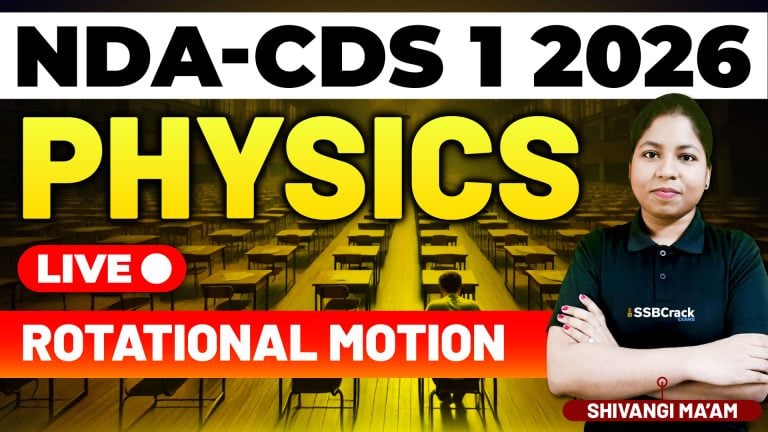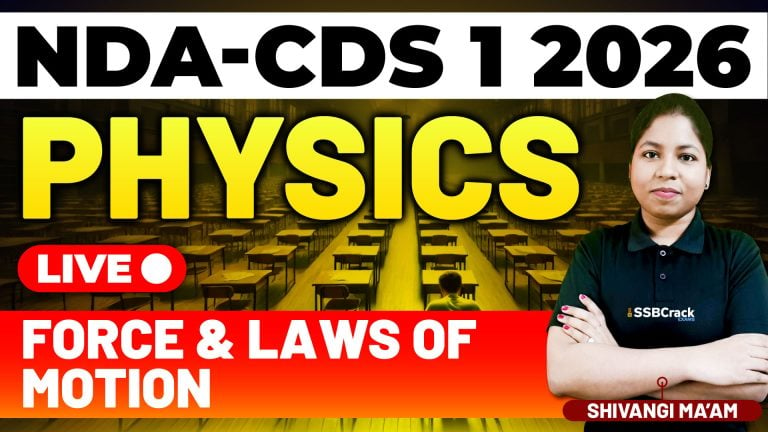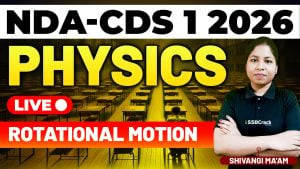A recent class on Analytical Geometry 3D provided valuable insights into this critical topic for the National Defence Academy and Naval Academy (NDA-NA) Exam – Paper I (Maths). The session covered fundamental concepts essential for success, including the Cartesian plane, coordinates in space, octants, direction ratios, direction cosines, and equations of lines. As Analytical Geometry 3D is an integral part of the NDA-NA syllabus, this class aimed to clarify these concepts through a practical approach to problem-solving. Here, we’ll explore the highlights of the class and discuss effective strategies for mastering Analytical Geometry 3
Key Topics Covered in the Class
1. Cartesian Plane and Coordinates in Space
The Cartesian plane is the basis of Analytical Geometry 3D, defining how we represent points in space. In the class, students reviewed:
- Coordinate System Basics: Recognizing how points are defined in 3D space using three coordinates (x, y, z).
- Representation in Space: Understanding how the three-dimensional coordinate system extends concepts from 2D, providing a foundation for analyzing figures in 3D.
The NDA-NA exam often includes questions requiring students to pinpoint specific locations in space based on given coordinates, making it essential to have a strong grasp of coordinate systems.
2. Octants
Octants are the eight distinct sections created in 3D space when divided by the coordinate planes. Key aspects discussed included:
- Identifying Octants: Understanding how each octant differs based on the signs of the coordinates (positive or negative).
- Positioning and Orientation: Learning to determine the location of points relative to these octants to build spatial awareness.
Questions on octants require students to visualize points in different sections of space, which enhances their understanding of coordinate interactions in 3D.
3. Direction Ratios and Direction Cosines
Direction ratios and direction cosines define the orientation of lines in space. This topic covered:
- Understanding Ratios and Cosines: Recognizing the significance of these measures in defining the direction of lines.
- Practical Application: Direction ratios and cosines are essential for analyzing angles and distances, so practicing these concepts is critical for problem-solving.
In the exam, candidates may need to find relationships between lines and angles, and understanding direction ratios and cosines is crucial to solving such questions.
4. Equations of a Line
The equation of a line in 3D space is more complex than in 2D and has unique properties. Topics discussed included:
- Different Forms of Equations: Learning how lines are represented in parametric, symmetric, and vector forms.
- Application of Line Equations: Using line equations to understand orientation and position in 3D space.
MCQs on equations of lines test candidates’ understanding of how to work with different forms and apply them to solve spatial problems.
5. Angle Between Lines
Understanding the angle between lines is essential for determining their spatial relationship. The class reviewed:
- Calculating Angles: Recognizing the importance of direction cosines and ratios in finding angles between lines.
- Practical Approach: Examining how these angles apply to real-world scenarios where determining the orientation between structures is crucial.
Strategies for Mastering Analytical Geometry 3D
- Develop a Solid Foundation: Analytical Geometry 3D builds on basic geometry and algebra, so ensure your fundamentals are strong. Familiarize yourself with concepts like coordinate systems and orientation, as these are integral to understanding more advanced topics.
- Visualize Concepts: 3D geometry can be challenging without visualization, so practice sketching diagrams to understand the spatial relationships between points, lines, and planes. This will enhance your ability to work through questions quickly and accurately.
- Practice Direction Ratios and Cosines: These concepts form the basis of many Analytical Geometry 3D questions, especially those involving line orientation and angles. Ensure you’re comfortable with calculating and applying direction ratios and cosines, as they are essential tools for problem-solving in this area.
- Master Different Forms of Line Equations: Line equations in 3D are more versatile than in 2D geometry, so take the time to understand parametric, symmetric, and vector forms. Recognizing when and how to use each form will save time and improve accuracy during the exam.
- Work Through Previous MCQs: As emphasized in the class, practicing past questions is crucial for recognizing patterns in how concepts are tested. This approach will give you insight into the kinds of questions that frequently appear on the NDA-NA exam and help you manage your time efficiently.
- Simulate Exam Conditions: Practice questions under timed conditions to get a feel for managing the pressure of the actual exam. Aim to complete sections within a set time, gradually increasing your speed as you become more confident.
- Use Mnemonics for Octants: Remembering the orientation of points within each octant can be tricky, so use mnemonic devices to help recall the sign combinations (positive or negative) associated with each octant.
- Review with Mock Tests and Study Groups: Mock tests provide valuable feedback on your preparation level, while study groups offer a chance to discuss challenging questions and learn different approaches to problem-solving.
Conclusion
Analytical Geometry 3D is a rewarding but challenging topic in the NDA-NA syllabus, and the recent class provided a clear roadmap for tackling its core concepts. By building a solid foundation in topics such as coordinates, direction ratios, line equations, and angles, candidates can develop the confidence and skills needed to excel in this section of the exam.
The key to mastering Analytical Geometry 3D lies in consistent practice and a systematic approach to visualization and problem-solving. By applying the strategies discussed here, NDA-NA aspirants can strengthen their understanding, sharpen their analytical skills, and approach the exam with confidence.



















